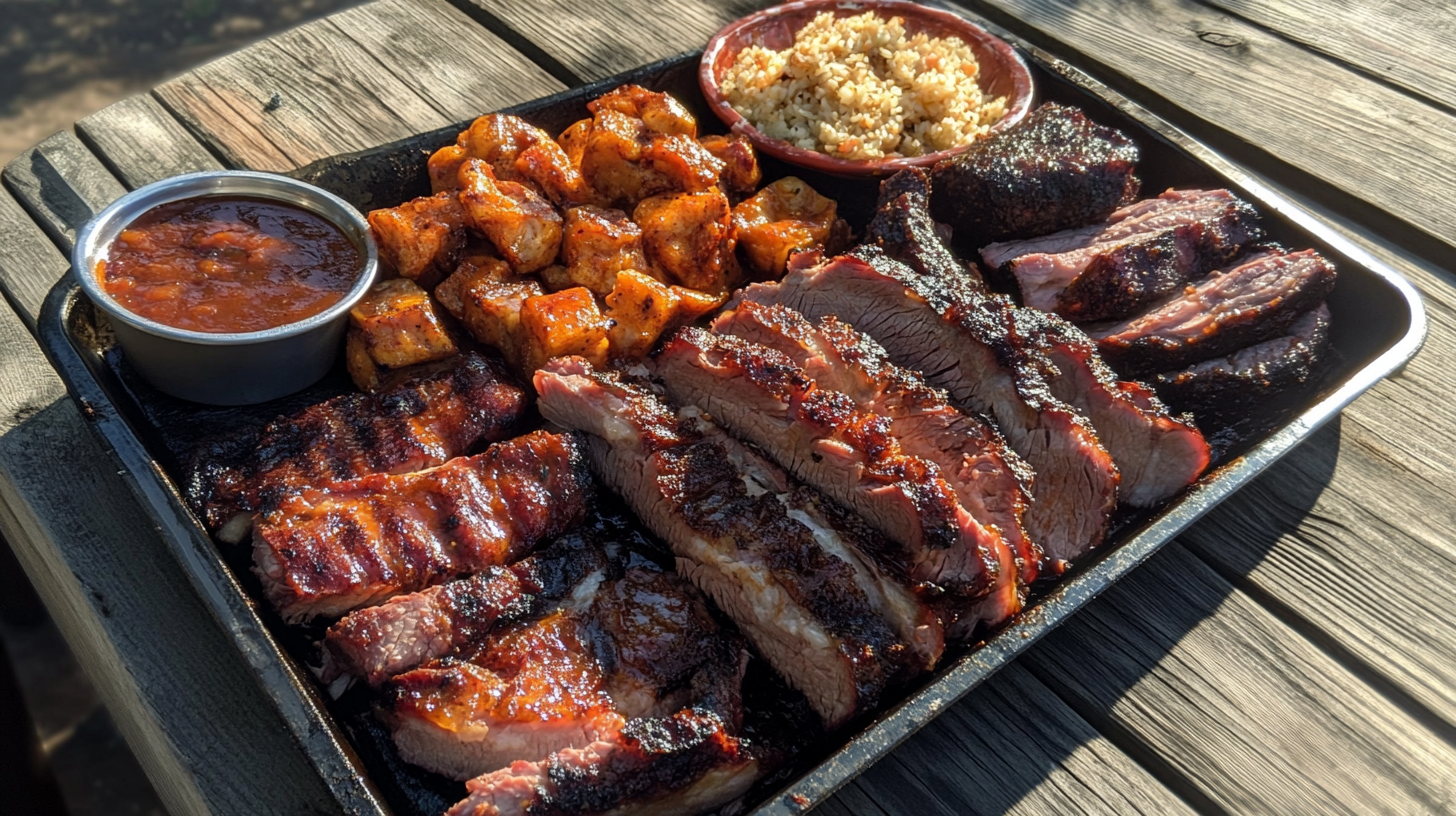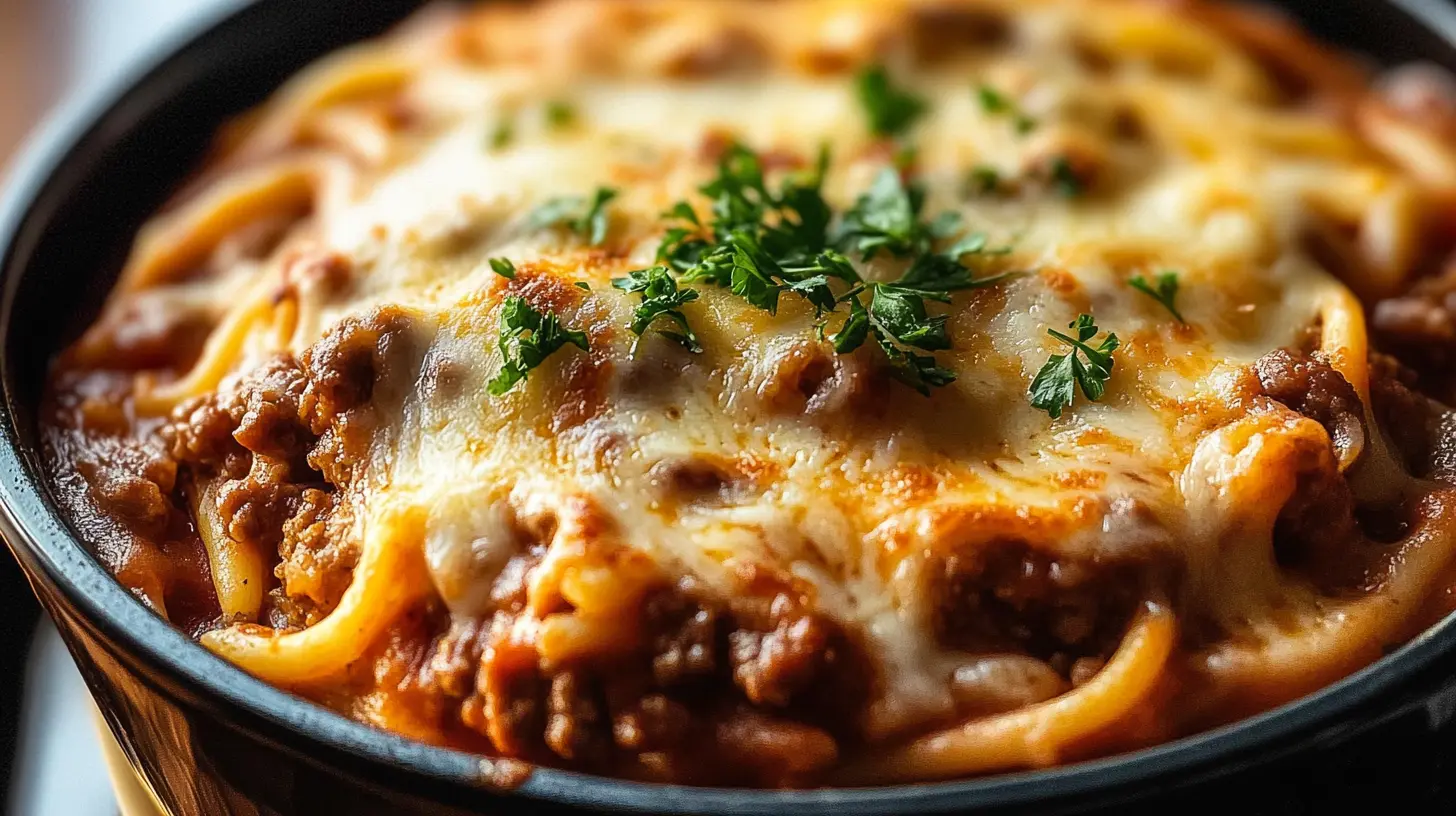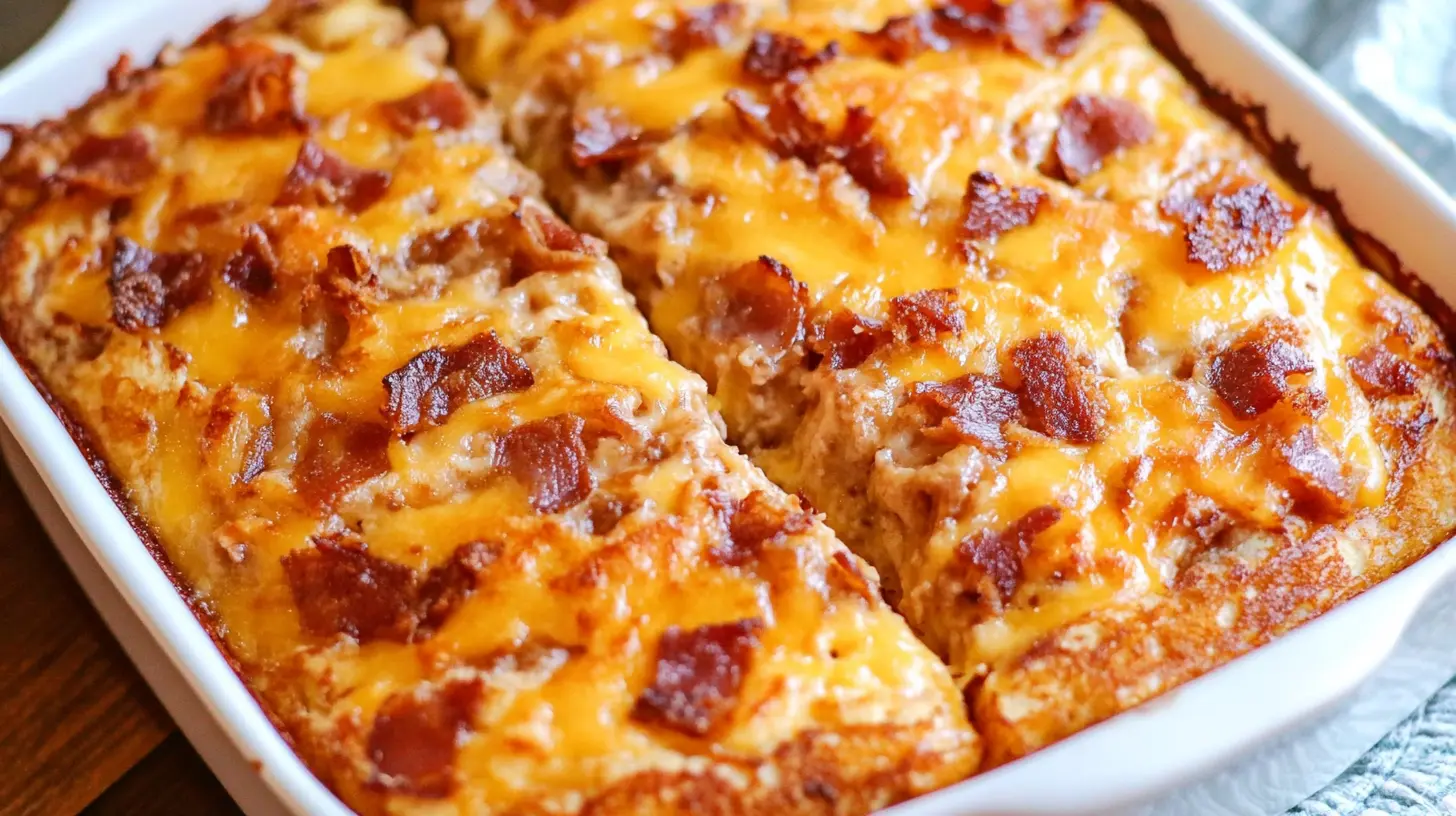Introduction to Recipe for Cold Region BBQ
If you’re living in or visiting a cold region and craving some BBQ, you don’t need to wait for summer to enjoy this savory delight. A well-planned Cold Region BBQ Recipecan be equally enjoyable, packed with rich, smoky flavors and paired with cozy side dishes. This recipe for cold region BBQ is designed for all cooks, from home cooks to seasoned grill masters, and highlights its versatility, simplicity, and health benefits. It’s suitable for various dietary needs, offering options for vegans, gluten-free diets, and health-conscious individuals.
Cold weather BBQs have unique benefits, such as reduced risk of overcooking due to cooler temperatures and the added comfort of enjoying hot, freshly grilled dishes in brisk weather. Whether you’re hosting a small gathering, looking for a satisfying family dinner, or simply experimenting with new cooking methods, this recipe offers everything you need. We’ll also cover dietary substitutions, storage tips, and nutritional information, ensuring that you can adapt this Cold Region BBQ Recipe to your lifestyle and preferences.
Check out our other Korean BBQ Recipe for more inspiration on creating BBQ dishes suited for different regions and tastes!
Benefits and Advantages of Cold Region BBQ
Cold region BBQ offers several advantages that make it a great choice for any occasion. Here are some of the top benefits:
1. Ideal for Year-Round Enjoyment
In colder climates, BBQ is often reserved for warmer months, but with this recipe, you can enjoy grilled foods throughout the year. The cool weather actually enhances the BBQ experience by creating the perfect contrast between hot food and chilly surroundings.
2. Healthier Cooking Method
Grilling your food not only brings out its natural flavors but also retains essential nutrients better than frying or other cooking methods. For diet-conscious individuals, this recipe is a fantastic way to enjoy protein-rich meals without excessive oil or fats. The smokiness of BBQ also adds flavor without the need for heavy sauces or salt, making it an excellent option for those watching their sodium intake.
3. Customizable to Dietary Preferences
Whether you follow a vegan, gluten-free, or low-carb diet, this cold region BBQ recipe can be customized to suit various dietary restrictions. You’ll find gluten-free ingredients, plant-based options, and low-calorie substitutions, making it easy to cater to everyone’s needs. BBQ veggies, tofu skewers, and lean meats ensure that there’s something for every guest.
For more ideas on how to incorporate BBQ into your diet, take a look at our BBQ Shrimp Recipe for a seafood twist on the classic BBQ.
Ingredients Overview
Essential Ingredients for Cold Region BBQ Recipe
Here’s a detailed list of ingredients to get started with your cold region BBQ recipe. We’ve included essential items for both meat lovers and those following plant-based diets. Each ingredient contributes to the flavor, texture, and overall success of the dish:
- Protein Options:
- Chicken thighs or breasts (500g): Juicy, tender, and perfect for marinating. Chicken holds flavors well and cooks evenly on the grill.
- Beef ribs or steak (500g): A classic BBQ favorite with a hearty flavor.
- Tofu or tempeh (300g): Perfect for vegans or vegetarians, these options absorb marinades and can be grilled to perfection.
- Vegetables:
- Sweet potatoes (2 large): Add a natural sweetness and are hearty enough to withstand grilling.
- Brussels sprouts (200g): When grilled, they develop a crispy texture and smoky flavor.
- Bell peppers (3 large, mixed colors): Vibrant and full of flavor, they add freshness to the Cold Region BBQ Recipe spread.
- Marinades and Spices:
- Soy sauce or tamari (1/2 cup): Adds a salty, umami flavor.
- Olive oil (1/4 cup): Helps the protein and veggies to cook evenly and prevents sticking.
- Garlic powder (1 tsp): Enhances the flavor of both meat and vegetables.
- Smoked paprika (1 tsp): Adds a smoky depth without the need for actual smoke.
- Maple syrup or honey (2 tbsp): A touch of sweetness to balance out the savory elements.
- Sauces:
- BBQ sauce (1/2 cup): Use a high-quality or homemade version for dipping and basting.
- Mustard or vegan mayo (1/4 cup): Adds a tangy kick to the finished meal.
Dietary Substitutions to Customize Your Cold Region BBQ Recipe
Catering to different dietary needs? Here are some simple substitutions you can make to ensure everyone enjoys the BBQ:
- Gluten-Free Option: Replace soy sauce with tamari or coconut aminos, both of which are gluten-free alternatives.
- Vegan Option: Substitute the chicken and beef with tofu, tempeh, or portobello mushrooms, which can all be marinated and grilled to perfection.
- Low-Calorie Option: Use lean cuts of chicken breast or opt for extra vegetables like zucchini and mushrooms in place of higher-calorie proteins.
These easy substitutions make this recipe adaptable for anyone, regardless of dietary restrictions.
How to Prepare the Perfect Cold Region BBQ: Step-by-Step Guide
Here’s a step-by-step breakdown on how to prepare your cold region BBQ, making sure it’s perfect every time.
First Step: Marinate the Protein
- In a bowl, mix together soy sauce (or tamari), olive oil, garlic powder, smoked paprika, and maple syrup (or honey).
- Add your choice of protein (chicken, beef, tofu, or tempeh) into the marinade, ensuring each piece is fully coated.
- Cover the bowl and refrigerate for at least 30 minutes, or up to 4 hours, allowing the flavors to infuse.
Second Step: Prepare the Vegetables
- While the protein marinates, wash and chop your vegetables.
- For sweet potatoes, slice them into thick rounds. Cut bell peppers into large strips and halve the Brussels sprouts.
- Toss the vegetables in a bit of olive oil and a sprinkle of smoked paprika and garlic powder to ensure even seasoning.
Third Step: Preheat the Grill
- If you’re grilling outside, make sure the grill is preheated to medium heat. For indoor grilling, use a grill pan or an electric grill, heating it to medium.
- Make sure the grill grates or pan are clean and lightly oiled to prevent sticking.
Fourth Step: Start Grilling
- Begin by grilling your marinated protein first. Place the chicken, beef, tofu, or tempeh on the grill and cook for 4-6 minutes on each side, depending on the thickness.
- As the protein cooks, add the vegetables to the grill. Sweet potatoes may take a little longer (6-8 minutes per side), while the Brussels sprouts and peppers will cook faster (about 4-5 minutes per side).
Fifth Step: Basting with Sauce
- As the protein and vegetables finish cooking, brush them with BBQ sauce or mustard for added flavor.
- Allow the sauce to caramelize slightly on the grill before removing everything from heat.
Sixth Step: Serve and Enjoy
- Once everything is cooked, transfer the protein and vegetables to a platter.
- Serve with extra BBQ sauce, mustard, or vegan mayo on the side.
Mastering Cold Region BBQ: Advanced Tips and Variations
To elevate your cold region BBQ, here are some advanced tips and variations you can try:
- Smoked Flavor Indoors: If you’re grilling indoors, try using smoked salt or adding a drop of liquid smoke to your marinade to replicate that classic BBQ smokiness.
- Add a Crunch: Toasted nuts or seeds, such as sunflower seeds or crushed walnuts, can add a delicious crunch when sprinkled over the finished dish.
- Hearty Winter Veggies: Swap out summer veggies for more robust cold-weather options like squash, carrots, or even cabbage for a unique flavor twist.
Experiment with different marinades, spices, and side dishes to keep your BBQ fresh and exciting, even during the coldest months.
How to Store Cold Region BBQ: Best Practices
To make sure your BBQ leftovers stay fresh, here are the best storage tips:
- Refrigeration: Store any leftovers in an airtight container in the fridge for up to 3 days.
- Freezing: If you want to save your BBQ for later, proteins like chicken and tofu freeze well. Place them in a freezer-safe bag and store for up to 2 months.
- Reheating: Reheat your BBQ in the oven at 350°F (175°C) until warmed through, or use a microwave for quicker reheating.
Nutritional Value of Cold Region BBQ
Here’s the approximate nutritional breakdown per serving for this recipe (based on chicken and a selection of veggies):
- Calories: 350-450 kcal
- Protein: 25g
- Fat: 15g
- Carbohydrates: 30g
- Fiber: 6g
- Sugars: 10g
These values will vary depending on the protein and vegetables you choose, as well as the amount of marinade and sauces used.
FAQs: Frequently Asked Questions About Cold Region BBQ
1. Can I use a regular grill in cold weather for BBQ?
Yes, you can! However, it requires a few adjustments. In colder climates, the outside temperature can easily lower your grill’s internal heat, so preheating might take a bit longer. Therefore, it’s essential to keep the grill covered as much as possible to retain heat. In addition, using a gas or propane grill works better because it offers more control over the temperature compared to a charcoal grill. For best results, always monitor the grill’s temperature and ensure you have extra fuel on hand for longer grilling sessions.
2. What are the best cuts of meat for cold weather BBQ?
Thicker cuts of meat work best for a cold region BBQ since they can handle slower, longer cooking times without drying out. For example, beef ribs, pork shoulder, and chicken thighs remain juicy and tender during extended grilling. Furthermore, these cuts absorb marinades and spices exceptionally well, enhancing their flavors. Marinating the meat beforehand will also help to keep it moist and flavorful throughout the grilling process.
3. How can I BBQ indoors if it’s too cold outside?
If grilling outdoors isn’t feasible due to extreme cold, you can easily use an indoor grill pan or an electric grill. These options help you achieve a similar charred, smoky effect indoors. Many indoor grills are designed to mimic the outdoor grill effect, incorporating smokeless technology. Additionally, adding smoked paprika or a few drops of liquid smoke to your marinades will help replicate that authentic outdoor BBQ flavor. Alternatively, using the oven broiler creates a similar charred effect on both meats and vegetables.
4. What’s the best way to keep food warm during an outdoor BBQ in cold weather?
To keep food warm in colder regions, you can wrap grilled items in aluminum foil and place them in an insulated cooler. The cooler, in turn, acts like a warming oven, retaining heat without overcooking the food. Additionally, slow cookers or chafing dishes can help keep food warm when serving at outdoor BBQs. If you’re grilling indoors, you can keep the oven at a low temperature (around 150°F or 65°C) to hold cooked items warm until ready to serve.
5. What vegetables are best suited for grilling in cold weather?
Hearty vegetables are ideal for cold-weather BBQs because they can withstand high cooking temperatures without becoming mushy. For instance, root vegetables like sweet potatoes, carrots, and parsnips, as well as winter squashes like butternut or acorn squash, are perfect choices. Additionally, Brussels sprouts, onions, and bell peppers are also excellent options. These vegetables can be cut into larger pieces, marinated, and grilled to add flavor and texture.
6. What safety precautions should I take when grilling in cold weather?
Grilling in cold weather does require a few additional safety precautions:
- Check your grill: Ensure it’s in good condition, and confirm that fuel lines (for propane) are neither blocked nor damaged.
- Dress safely: Avoid wearing loose clothing that could catch fire, and use heat-resistant gloves to handle hot surfaces safely.
- Grill positioning: Always keep the grill away from structures, especially in windy or snowy conditions.
- Monitor the temperature: Cold weather affects grill temperature, so you’ll need to check it frequently to ensure even cooking.
For more information, you can visit this detailed article on Grilling.
7. How do I prevent food from sticking to the grill in colder temperatures?
In colder temperatures, preventing food from sticking to the grill can be challenging. However, preheating the grill thoroughly before placing food on it helps. Additionally, coat the grill grates with oil (such as vegetable or olive oil) to create a non-stick surface. You can also brush a little oil directly onto the food before grilling. Using high-fat marinades works well too, as they form a protective barrier between the food and the grill.
8. Can I still get a smoky flavor without a charcoal grill?
Yes, you can! Although charcoal grills are traditionally known for producing a smoky flavor, you can still achieve a similar effect using gas or indoor grills. For instance, adding smoked paprika or a few drops of liquid smoke to your marinade will help recreate that rich, smoky flavor. Moreover, some electric or gas grills come with smoker boxes, or you can use wood chips to infuse smoke flavor without using a charcoal grill.
9. What are some plant-based alternatives for BBQ in cold regions?
Plant-based alternatives can work wonderfully for cold region BBQs. Here are a few popular options:
- Tofu: Tofu absorbs marinades well and grills with a nice char. Be sure to press out excess moisture before marinating.
- Tempeh: Tempeh offers a firmer texture than tofu and is perfect for grilling, especially when paired with smoky sauces.
- Portobello mushrooms: These meaty mushrooms are hearty and make excellent burger substitutes.
- Cauliflower steaks: Thick slices of cauliflower can be marinated and grilled as a delicious meat alternative.
10. How do I adapt BBQ recipes to fit specific dietary restrictions?
Adapting cold region BBQ recipes to accommodate various dietary needs is simple:
- Gluten-Free: Substitute soy sauce with gluten-free tamari or coconut aminos, and double-check that BBQ sauces are gluten-free.
- Low-Carb: Opt for low-carb vegetables like zucchini, mushrooms, and leafy greens instead of starchy vegetables.
- Vegan: Use tofu, tempeh, or hearty vegetables in place of meat, and choose vegan-friendly sauces like vegan mayo or BBQ sauce.
Conclusion
Preparing a cold region BBQ doesn’t have to be limited by the weather. With the right techniques, hearty ingredients, and thoughtful substitutions, you can enjoy flavorful, comforting BBQ dishes all year round. Whether you’re grilling outdoors in the cold or adapting for indoor cooking, this versatile recipe ensures everyone—meat lovers and vegans alike—can indulge in delicious BBQ flavors no matter the season.
For more on grilling methods, feel free to check out Wikipedia’s Grilling Article.
Happy grilling!




